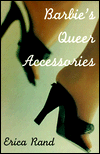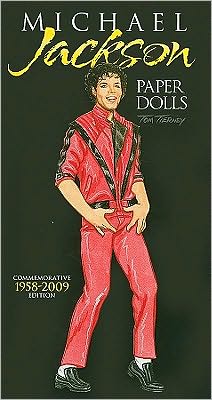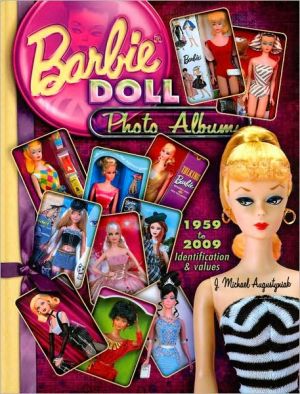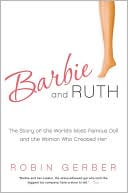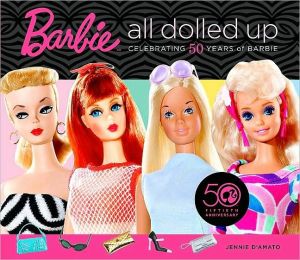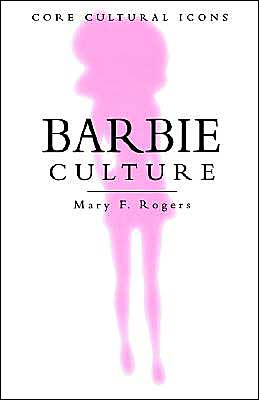Barbie's Queer Accessories
She’s skinny, white, and blond. She’s Barbie—an icon of femininity to generations of American girls. She’s also multiethnic and straight—or so says Mattel, Barbie’s manufacturer. But, as Barbie’s Queer Accessories demonstrates, many girls do things with Barbie never seen in any commercial. Erica Rand looks at the corporate marketing strategies used to create Barbie’s versatile (She’s a rapper! She’s an astronaut! She’s a bride!) but nonetheless premolded and still predominantly white image....
Search in google:
She’s skinny, white, and blond. She’s Barbie—an icon of femininity to generations of American girls. She’s also multiethnic and straight—or so says Mattel, Barbie’s manufacturer. But, as Barbie’s Queer Accessories demonstrates, many girls do things with Barbie never seen in any commercial. Erica Rand looks at the corporate marketing strategies used to create Barbie’s versatile (She’s a rapper! She’s an astronaut! She’s a bride!) but nonetheless premolded and still predominantly white image. Rand weighs the values Mattel seeks to embody in Barbie—evident, for example, in her improbably thin waist and her heterosexual partner—against the naked, dyked out, transgendered, and trashed versions favored by many juvenile owners and adult collectors of the doll.Rand begins by focusing on the production and marketing of Barbie, starting in 1959, including Mattel’s numerous tie-ins and spin-offs. These variations, which include the much-promoted multiethnic Barbies and the controversial Earring Magic Ken, helped make the doll one of the most profitable toys on the market. In lively chapters based on extensive interviews, the author discusses adult testimony from both Barbie "survivors" and enthusiasts and explores how memories of the doll fit into women’s lives. Finally, Rand looks at cultural reappropriations of Barbie by artists, collectors, and especially lesbians and gay men, and considers resistance to Barbie as a form of social and political activism.Illustrated with photographs of various interpretations and alterations of Barbie, this book encompasses both Barbie glorification and abjection as it testifies to the irrefutably compelling qualities of this bestselling toy. Anyone who has played with Barbie—or, more importantly, thought or worried about playing with Barbie—will find this book fascinating.Library JournalHave you ever dressed Barbie in Ken's clothes or let her sleep with Skipper? If so, consider yourself an accessory to the crime of liberating Barbie from her conformist, straight world. Describing herself as a dyke cultural critic and political activist, university teacher Rand examines how consumer interactions with Barbie affect and reflect their political, social, and gender identities. She contrasts owners' recollections of what they thought about and did to their Barbies with the conventional characteristics and socially approved uses promoted by the doll's corporate manufacturer, Mattel. Speaking from an alternative viewpoint, Rand shows how adult reinterpretations and subversions of white, blond, straight Barbie (for additional examples see Lucinda Ebersole and Pichard Peabody's Mondo Barbie, St. Martin's Pr., 1993) become forms of resistance to disempowering and discriminatory cultural messages. Recommended for academic libraries and scholars of popular cultural and gay or women's studies.Carol A. McAllister, Swem Lib., Coll. of William and Mary. Williamsburg, Va.
\ Library JournalHave you ever dressed Barbie in Ken's clothes or let her sleep with Skipper? If so, consider yourself an accessory to the crime of liberating Barbie from her conformist, straight world. Describing herself as a dyke cultural critic and political activist, university teacher Rand examines how consumer interactions with Barbie affect and reflect their political, social, and gender identities. She contrasts owners' recollections of what they thought about and did to their Barbies with the conventional characteristics and socially approved uses promoted by the doll's corporate manufacturer, Mattel. Speaking from an alternative viewpoint, Rand shows how adult reinterpretations and subversions of white, blond, straight Barbie (for additional examples see Lucinda Ebersole and Pichard Peabody's Mondo Barbie, St. Martin's Pr., 1993) become forms of resistance to disempowering and discriminatory cultural messages. Recommended for academic libraries and scholars of popular cultural and gay or women's studies.Carol A. McAllister, Swem Lib., Coll. of William and Mary. Williamsburg, Va.\ \ \ \ \ BooknewsIn lively chapters based on extensive interviews, the author discusses adult testimony from both Barbie "survivors" and enthusiasts and explores how memories of the doll fit into women's lives. She also looks at cultural reappropriations of Barbie by artists, collectors, and lesbians and gay men, and considers resistance to Barbie as a form of social and political activism. Annotation c. Book News, Inc., Portland, OR (booknews.com)\ \
